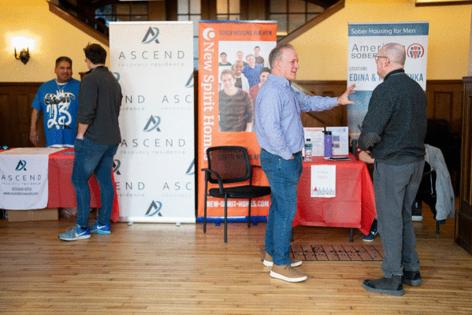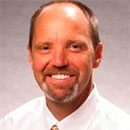Many Minnesotans in sober homes just lost housing. Where will they go?
Published in Health & Fitness
A dozen men left Nick Carchedi’s St. Paul sober home last week as the housing dollars they relied on came to an abrupt halt.
He worries about what the displacement will mean for their recovery — and for the sober home he started last year, which was left with just two residents.
“These people are going to be out on the street or doing something that they shouldn’t be doing,” Carchedi said. “It’s not going to be good for the community.”
The same story is playing out across many Minnesota sober homes as a new state law took effect last Friday that blocks addiction treatment providers from covering housing costs for people who attend their outpatient programs.
The change follows crackdowns on Minnesota treatment providers Nuway Alliance and Evergreen Recovery, which investigators said violated federal antikickback laws by offering free or reduced housing to attract clients, most of whom used Medicaid to pay for treatment. Minnesota did not have a similar antikickback measure on the books and legislators recently passed a law mirroring federal rules.
But the abrupt change could have unintended consequences.
Hundreds of Minnesotans who have relied on assistance from treatment providers to pay rent at sober homes are out of luck, said people working in the field. They predicted many sober homes and some treatment providers will close.
“I don’t know who is going to see them, I really don’t know,” Rep. Dave Baker, R-Willmar, said of people in recovery who lost sober housing. “I hope it’s not the jails, my God. I hope it doesn’t increase homeless stuff a bunch, and I pray that they don’t get back into their [substance] use.”
Replacing the housing stipends
Many people already lost sober housing after Nuway Alliance, Minnesota’s biggest practitioner of the treatment with housing assistance model, halted its intensive outpatient treatment program this spring.
The program had been around for about a decade and served around 5,000 people last year, Nuway officials said, with the vast majority of those clients getting housing aid. They offered people $700 a month to cover rent at a recovery residence while they participated in treatment.
Nuway’s lawyer has maintained the organization didn’t violate any laws and state officials knew about the program for years. Nonetheless, the nonprofit recently agreed to an $18.5 million settlement to address claims of Medicaid fraud related to double-billing and kickbacks.
The new state law change triggered a second wave of housing loss as smaller treatment providers also stopped offering such rent help.
Housing aid from treatment providers “wasn’t the worst thing ... but it wasn’t really following the rules,” Baker said.
He said concerns about the practice came amid various other fraud allegations and there was a feeling at the Capitol this year that, “Oh my God, we gotta just stop it immediately.”
However, lawmakers should have done a better job coming up with a plan to use the state’s Housing Support program to replace the housing stipends from treatment providers, Baker said. That’s something legislators will tackle next year, he said, though they likely won’t have a plan in place until 2027.
There is not an easy substitute for the stipends that treatment providers had been giving out, said David Hewitt, Hennepin County’s housing stability director. He said the county has been providing information on programs to prevent homelessness when people approach them about the issue.
“We are aware that this is potentially going to be very disruptive,” Hewitt said.
Faced with the loss of the stipend dollars, some sober home providers sought state approval to become board and lodge facilities, a different housing model that allows them to receive government funding, said Margie Pierce, who owns Twin Cities outpatient treatment program Fellowship Recovery and runs some recovery homes. She said the process was complicated and costly, and she was one of a small number of providers who got approved before a June 30 deadline.
“All of us rushed toward a little crack they left in the wall, called board and lodge, and a few of us got through,” she said. “But it was very, very challenging.”
Shake-up for sober homes
As lawmakers work on an alternative to help cover housing costs for people in recovery, many sober home operators who relied on treatment organizations to pay their residents’ rent are expected to close after last Friday.
“It’s the Y2K date of sober housing,” said Aric Smedstad with St. Paul Spirit House, which has four sober living homes. He said outpatient programs that offered sober living assistance allowed people to prioritize their recovery over work.
“To be able to just sit back for that minute and get some time under your belt, let the fog in your head clear and start to organize life — that was a gift,” Smedstad said.
But some sober home closures is a good thing, many people working in the field said.
There was little assistance for people looking to live in sober homes before the treatment provider payment model proliferated in Minnesota, St. Paul Sober Living owner and founder Chris Edrington said. Someone may have had a relative who helped them, or had a job and were able to foot the bill themselves.
Then Nuway started their model and put up a “bat signal” because they couldn’t get beds fast enough, and suddenly lots of people opened sober homes — and some were terrible, said Edrington, vice president of the Minnesota Association of Sober Homes (MASH).
Sober homes don’t need a state license or certification to operate in Minnesota, and no one has an exact count of how many exist in the state.
Nuway became the de facto “gatekeepers of what’s a good sober house,” Edrington said. Now, he said, sober-home owners will have to market themselves and maintain a good reputation to fill beds. He predicted meeting MASH’s standards and going through its voluntary certification process will become more important.
Dave Sheridan, who leads the National Alliance for Recovery Residences, said Minnesota should follow about 20 other states that have added funding to incentivize operators to get certified. He stressed the need for quality recovery housing.
“For a goodly percentage of people, no matter how much treatment they get, nothing is going to stick until they have a chance to live someplace without the pressures that they were under,” Sheridan said. “They’ve got to have a safe, stable place to nurture their recovery.”
©2025 The Minnesota Star Tribune. Visit at startribune.com. Distributed by Tribune Content Agency, LLC.










Comments